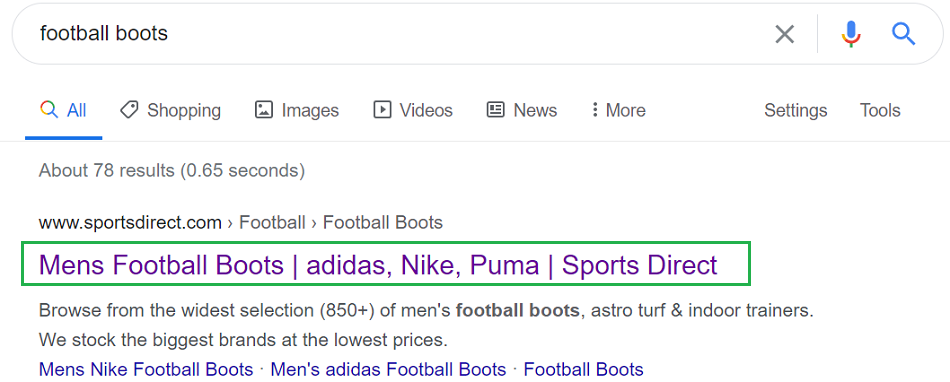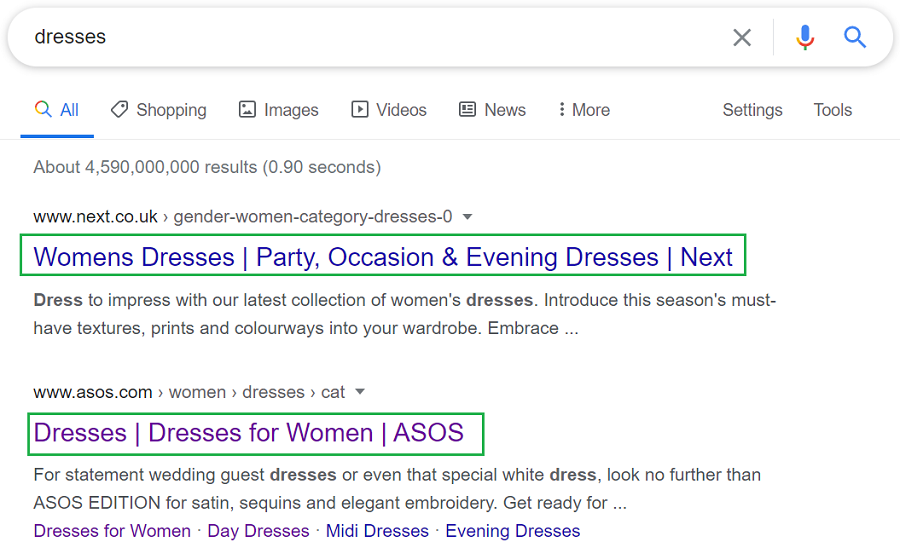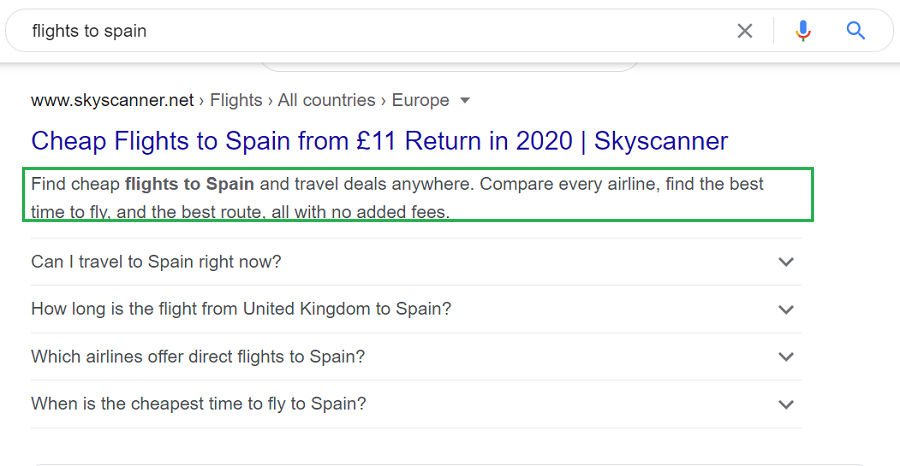SEO Best Practices for Meta Data Optimisation
Whether it’s metadata or on-page content, it is really important to write for your target audience based on search intent. Effective high-quality metadata helps both search engines and users know what’s the page about. SEO best practices for the page title, meta description and header tags are placed below.
Title Tag Best Practices
What is a Page Title? Page title sometimes referred to as the ‘Title Tag’ (or the meta title) is what you see on the SERP as the hyperlinked one-line summary of the page. It is one of the most important on-page SEO ranking factors as it helps search engines and searchers understand your page content and determine if your page is relevant for the search query. Page titles should be descriptive and concise. A good title also helps with the click-through rate.

- Every page on your website must have a unique relevant Page title using your main keywords that tell Google what your page is about.
- Add your focus/primary keyword to the beginning of the title. When catchy and relevant, title tags can increase CTR from the SERPs.
- It is recommended to keep your page titles under 60 characters including spaces.
- Use your target keywords, but avoid keyword stuffing your title. Make them compelling.
- On eCommerce sites, I use a specific format that has been effective for me to improve the rankings of product lister pages. It looks like this – Primary Keyword | Secondary Keyword | Site Name.

- You could either use pipes or hyphens as dividers in your title. That doesn’t impact rankings. Just ensure you use either and keep it consistent across the site.
- Include your site name/brand name at the end.
- Add modifiers to your title like Best, Easy, Free, Fast etc.
eCommerce sites tend to automate page title creation because of the sheer number of pages. For best results, manually review and update the page titles of your top-performing pages and core products.
Meta Description Best Practices
What is a Meta Description? The meta description is a short description that you see in SERPs below your page title. They are useful in helping users understand the content of your page. They don’t influence the rankings of the page but act as a sales pitch to capture the interest of the user and encourage them to click through to the page from the SERP.

- Keep the length of the meta description to about 160 characters in length including spaces.
- Your meta descriptions must be unique across your site pages.
- Set yourself apart on the SERPs by adding information such as offers, free shipping, etc. They influence click-through rates.
- Adding markup to your HTML will make the snippet displayed below the title stand out through the use of rich snippets.
What are Headings? Headings are useful for segmenting and signposting your users through your page content. H1 is usually the main heading of the page. H2’s, H3’s and other lower-level headings are useful for visually breaking up the page content to improve readability.
H1, H2 Headings Best Practices
- Each page should have one <h1> heading as the main heading.
- H1 is usually your post title. Make it enticing so your visitors spend time reading your content.
- Include your primary keyword in your H1. Incorporate long-tail keywords or question queries in subheadings H2, H3 etc.
